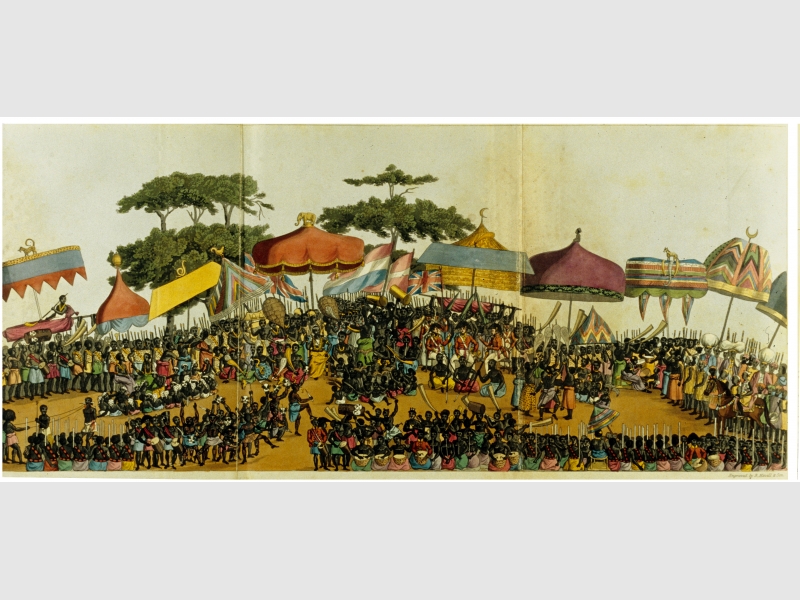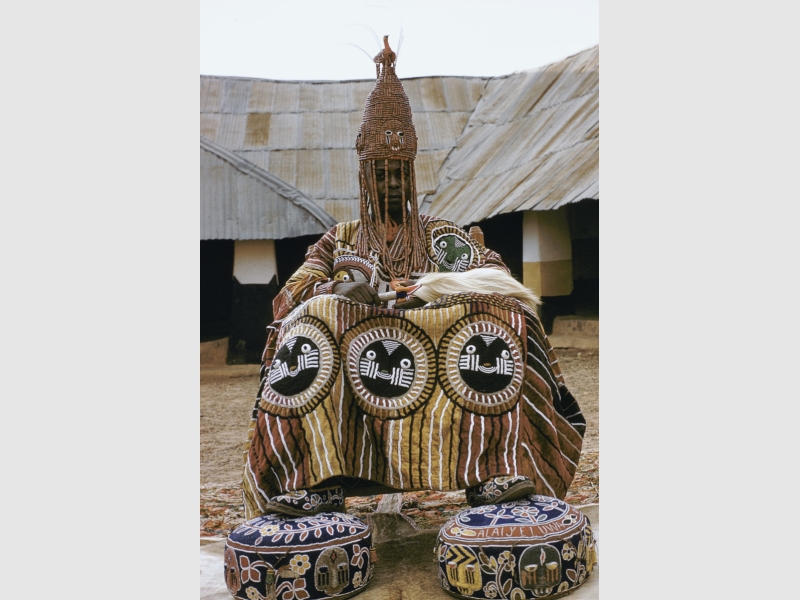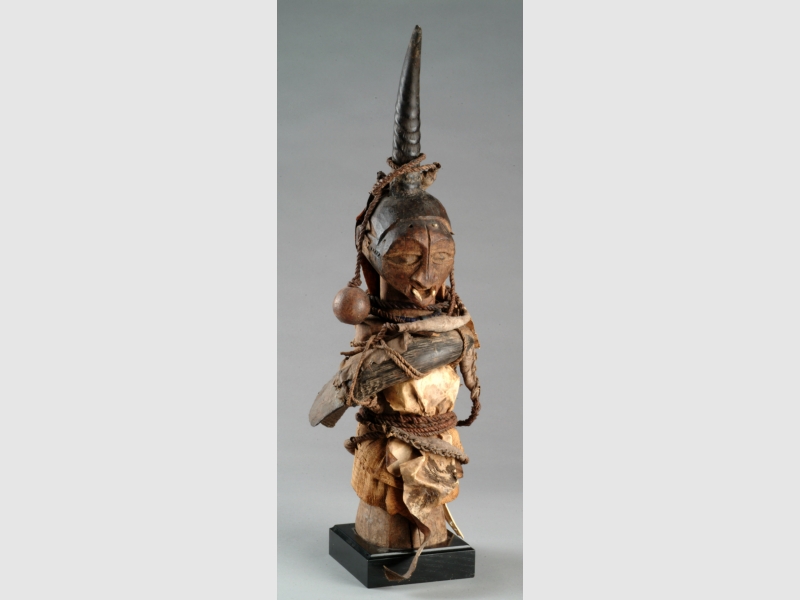Before colonization, complex hierarchical societies flourished in Central and West Africa. At their summits were a select few—kings and chiefs whose authority was derived from their direct connection to powerful ancestors and predecessors. These rulers were wrapped in expensive textiles or costly furs, and covered in beads and precious metals—materials that not only signaled their extraordinary status, but were also intended to safely contain the great power they wielded. The famous minkisi (meaning “power figure”) sculptures of Central Africa were similarly activated through the addition of charged materials. Textiles, animal skin, metal, and beads allowed the lifeless wooden carvings to be activated by local spiritual leaders in order to communicate with the realm of the ancestors and spirits. This exhibition explores the parallels between the adornment of the king’s physical body and minkisi. Drawing on works from UMMA’s collection and several loans, the exhibition demonstrates how authority was expressed and power contained across a range of historical cultures in Nigeria, Ghana, the Democratic Republic of the Congo and Cameroon.
Lead support for Power Contained: The Art of Authority in Central and West Africa is provided by the University of Michigan Office of the Provost and the African Studies Center.
Images
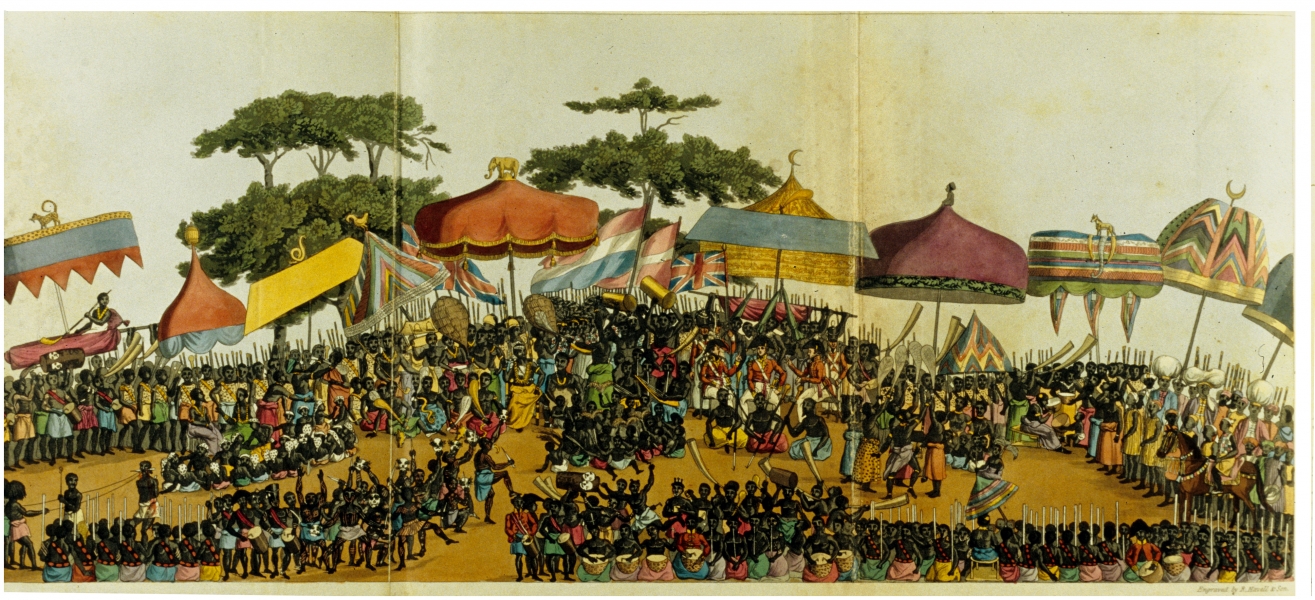
Thomas Edward Bowdich, The First Day of the Yam Custom, 1818, printed 1819, colored aquatint. Special Collections Library, University of Michigan Library.
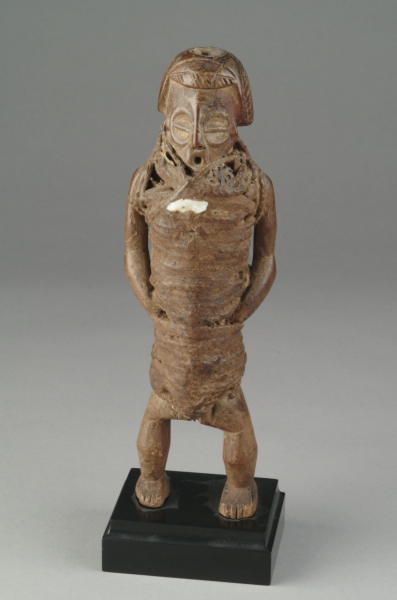
Artist unrecorded, Democratic Republic of the Congo, Bembe peoples. Male figure, ca. 1870, wood, tukula powder, vegetable fiber, shell, resin. University of Michigan Museum of Art, Gift of Candis and Helmut Stern, 2005/1.196.2
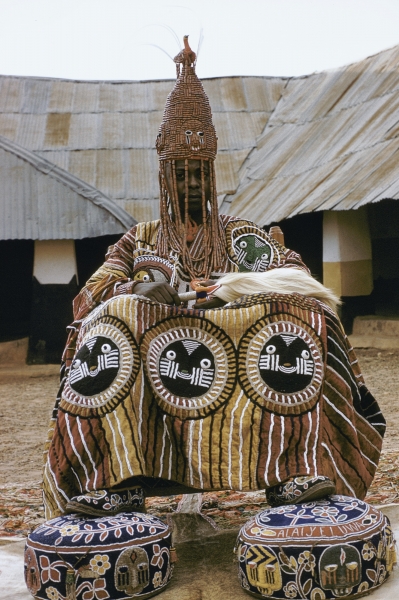
Eliot Elisofon. Oba Ademuwagun Adesida II, the Deji (ruler) of Akure, on throne in courtyard of Akure palace, Akure, Nigeria, 1959, photograph. Courtesy of Eliot Elisofon Photographic Archives, National Museum of African Art, Smithsonian Institution, EEPA EECL 2087
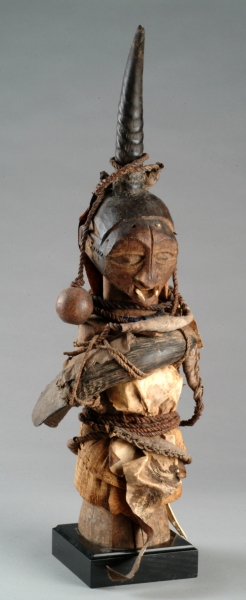
Artist unrecorded, Democratic Republic of the Congo, Songye peoples. Power figure (nkisi), ca. 1940, wood, civet skin, monkey skin, woven vegetable fiber, feathers, seed pods, animal teeth, antelope horns, glass beads, metal. University of Michigan Museum of Art, Gift of Candis and Helmut Stern, 2005/1.229

